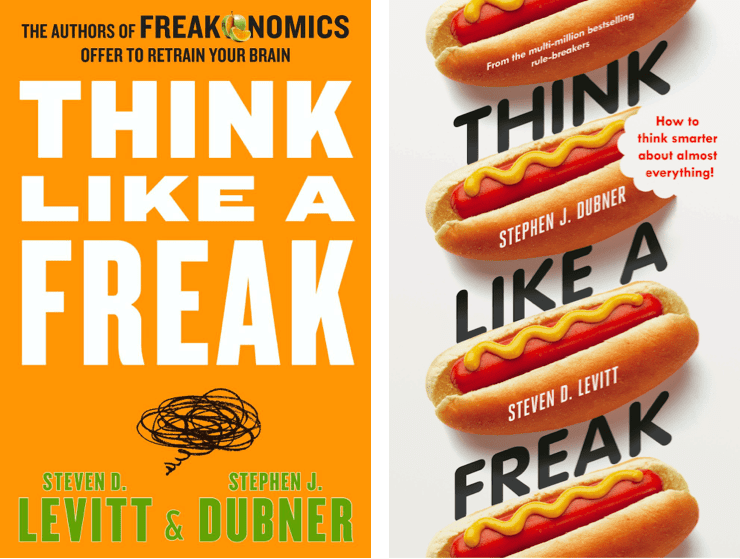 From the authors of the book and equally popular podcast, Freakonomics, Stephen Dubner and Steven Levitt have released their third book, Think Like a Freak. While the first two books looked more from an economist’s standpoint, this book tends to come from the perspective of a social scientist’s, with a bit of economics to back up their case studies. Nonetheless, I thought the book was well written, question raising, stimulating, and informative.
From the authors of the book and equally popular podcast, Freakonomics, Stephen Dubner and Steven Levitt have released their third book, Think Like a Freak. While the first two books looked more from an economist’s standpoint, this book tends to come from the perspective of a social scientist’s, with a bit of economics to back up their case studies. Nonetheless, I thought the book was well written, question raising, stimulating, and informative.
The underlying theme that Dubner and Levitt aim to get across in this book is to think differently, to think small. They argue that when we stumble upon a big problem we have to solve, whether a creative problem, scientific problem, internal problem, or whatever it may be, that we have been told to think BIG. They argue that we’re told to always “think outside the box”, as that, according to popular mantra, is how to creatively solve problems. But what if all the answers aren’t outside the box? What if the answers are sitting right in front of us, and we’re too busy looking for answers outside the box? Through a series of interesting case studies, Dubner and Levitt come to conclusions that on many cases, the answers to some of the toughest questions we ask have been so unbelievable insight, that we completely miss them.
One of their first cases they look at has to do with taking a penalty shot in soccer. They statistically breakdown the penalty shot statistics at the elite level, and come to the exact conclusion of where to shoot the ball – directly up the middle, where the goalie is standing. You would think that shooting the ball directly into one of the top corners of the net is the safest way to score a goal, but Freakonomics disagrees. If you’re a right-footed kicker, their stats suggest that the goalie will dive to your left side 57 percent of the time, and to your right side 41 percent of the time. That leaves a mere two percent of the time that the goalie stays put. Why then, don’t soccer players shoot right up the middle? Dubner and Levitt attempt to answer why, like soccer players, we as members of society don’t simply go straight up the middle with our problems; why we’re always looking to complicate things. It’s the answer to this question and many others that they try to help us understand throughout the book.
Dubner and Levitt also encourage the readers of this book to think like a child. You might have heard this before, as thinking like a child allows us to think creatively, not caring what others think of our ideas. But it’s more than that. It’s about seeing life through a lens with no preconceived notions, no prejudices or biases, and essentially no understanding of anything. Thinking like this allows us to ask our most absurd questions, come up with the most ridiculous ideas, and really try to understand how things work. You probably remember yourself as a kid, continually asking your parents, “Why? But why? But why?” If we stay in this mindset, or at least go back to it when we’re trying to understand an idea or concept, it can surely benefit how we perceive what’s around us, helping us come to a conclusion through a different perspective.
With many more case studies, ranging from “Why Do Nigerian scammers say they are from Nigeria?” to “What the brown M&Ms were really about”, Dubner and Levitt allow and encourage to think from a different perspective, to think like a child, to think like a freak.
